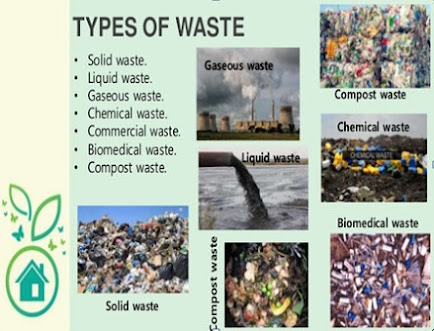Based on origin,
air pollution can be categorized into natural and anthropogenic (man-made)
sources.
Natural Sources of Air Pollution:
Examples
of natural sources are pollutants from forest fires, volcanic eruptions,
pollens, and dust blown by the wind.
 |
Examples of anthropogenic sources of air pollution are the burning of fossil fuels in the individual plant (stationary source) and automobiles (mobile sources). Other sources include agricultural activities, livestock, cities, and the burning of wood in fireplaces at homes also generates air pollutants.
Anthropogenic Sources of
Air Pollution:
a) Burning of Fossil fuel and Fires
b) Transportation (Mobile sources)
c) Industries (Stationary sources)
The man-made cause of air pollution is fossil fuel combustion such
as petrol, coal, and natural gas.
Fossil fuels are used to run transport, for heating purposes,
cooking, and to produce electricity in power plants, and in industries to
manufacture goods.
The burning of wood in fireplaces at homes also becomes a cause of air
pollution.
The burning of fossil fuels generates many air pollutants and is involved
in the formation of acid rain, smog, and soot.
Burning fossil fuels also causes emissions of harmful gases that
trap heat from the sun and increase the temperature of the earth. This
phenomenon is called global warming.
b)
Transportation:
Transportation sources are also known as mobile sources.
The emissions from mobile sources are the major sources of air
pollution in many urban areas.
Four significant air pollutants are generating by mobile
sources.
(1) Carbon monoxide
(2) Nitrogen oxide
(3) Hydrocarbon
(4) Particulate matter
Other important air pollutants generating by mobile sources are:
1- Greenhouse gases
2- Air toxics.
Transportation sources can be grouped into on-road vehicles and off-road vehicles.
On-road Vehicles:
These include light-duty vehicles, heavy-duty trucks, and motorcycles, which are used for transportation on the road.
Off-road Vehicles:
These include engines, vehicles, and equipment used for
agriculture, construction, recreation, transportation, and many other
purposes. Aircraft are also an off-road source of air pollution.
c)
Industries:
The industrial sector is responsible for large-scale air pollution. The extent of gaseous pollutants from industries is very high as compared to other sources. The number of industries is increasing due to urbanization and population pressure.
Industrial Air Pollutants







Can you please define "air toxics" more clearly? As this is written, it reads like you try to distinguish them from carbon monoxide, nitrogen oxide, [hydrocarbons], and particulate matter. All these things are toxic.
ReplyDeleteGreen house gases cause global warming, climate change and other environmental issues whereas air toxics are pollutants having adverse effect on human health
DeleteI Have a Great Technique to reduce Air Pollution & Clean Air from all Harmful gases.
ReplyDeleteFrom,
Bharat (India)
Hasmukh Patel
+918460002454